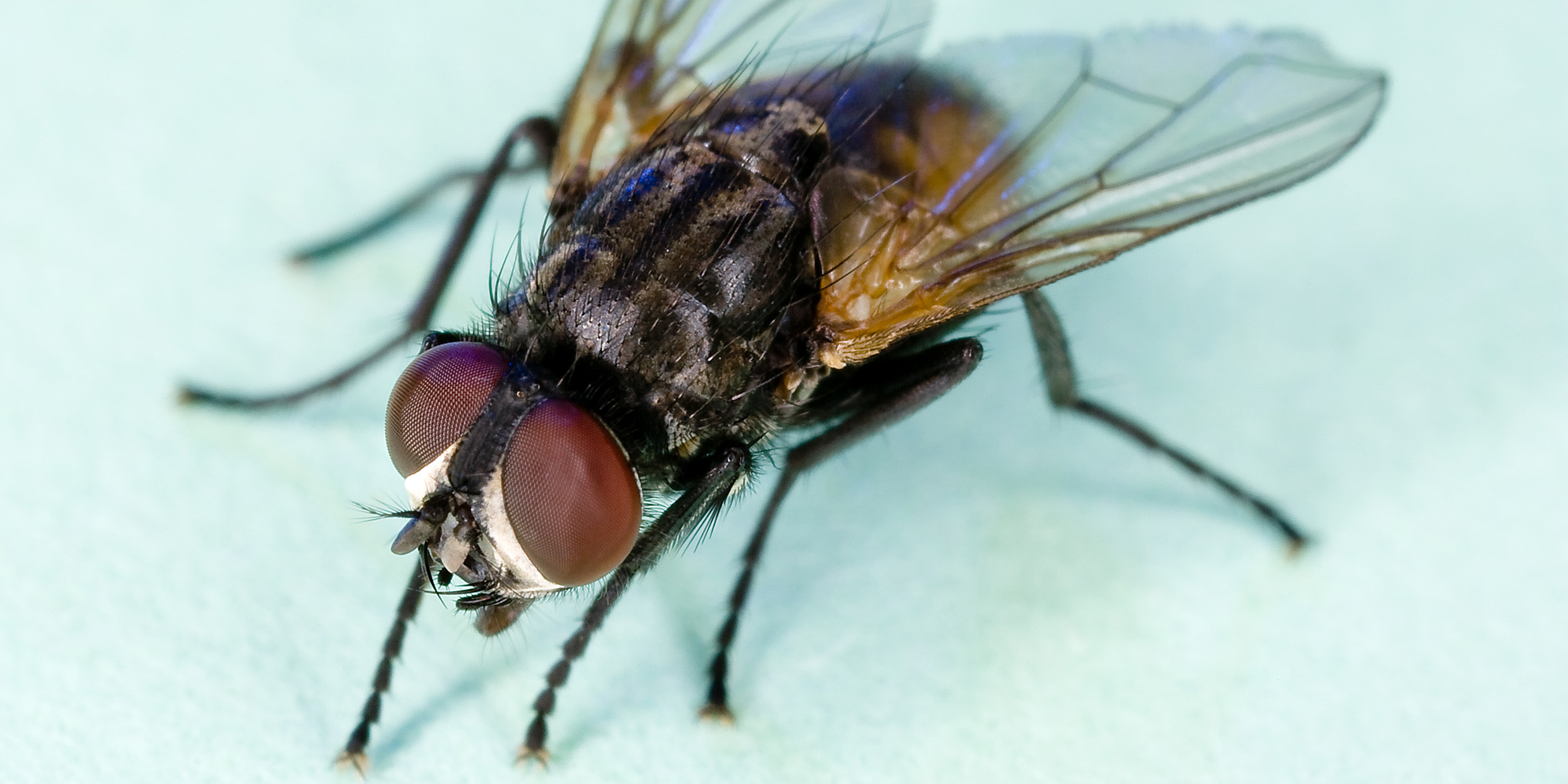Originally published 10 July 1989
Grab the swatter! Here comes Musca domestica, the common house fly. Cosmopolitan. Ubiquitous. From Polar Circles to the Equator. On every continent. The Typhoid Mary of the insect world. Irritating, filthy-footed, summertime pest.
Ogden Nash got it exactly right: “God in His wisdom made the fly, And then forgot to tell us why.”
Our pre-scientific ancestors had an answer. The fly was the Devil in disguise. Beelzebub in Hebrew means “lord of the flies.” Medieval writers claimed to hear in the fly’s bothersome buzz the nattering voice of the old Tempter himself. The only knighthood believed to exist in Hell was the Order of the Fly, awarded for singular service to Satan. In Spenser’s The Faerie Queen, Archimago summons spirits from Hell in the shape of flies.
Only the holiest persons could command the fly. It is said that a fly used to walk up and down on the page of Scriptures as St. Colman sat reading; when the saint had to go about other business, he ordered the fly to sit upon the line where he stopped reading to hold his place.
A gem of evolution
Alas, we lesser mortals have no such power. Despite our persistent efforts to screen, cover, and close, the fly vexes. Centuries of sanitary engineering and decades of chemical warfare seem only to have made the domestic fly more rugged and resourceful. Clearly, our harassing cohabiter is wonderfully adaptable, an iridescent little gem of evolution.
The point of flies is to make more flies. Flies fly to mate. They get the energy they need for flight from oxidizing carbohydrates, which is why flies are so powerfully attracted to our sugar-filled kitchens. They can’t chew or bite; they taste with their feet and feed by dissolving, regurgitating enzymes that liquefy food.
The fly is a creature that only a mother could love. And fly mothers have lots of fly babies upon whom to administer maternal affection, such as it is. A female Musca domestica lays upwards of a thousand eggs in a season, in four or five batches. She starts in April, after surviving the winter in some snug place, and if nothing limited the maturing and mating of her offspring by mid-September her progeny might number in the billions. Fortunately, not all eggs become maggots, not all maggots become adults, and not all adult females mate. Still, even in the tidiest households, the prodigiousness of the process produces plenty of flies to swat.
Flies are suspected of disseminating all sorts of diseases, from tuberculous to conjunctivitis, but the rap has been hard to pin. Historically, most of the evidence for fly-borne disease was circumstantial, but any creature that passes its early life in dung, garbage, and decaying flesh, and its adult life at our dinner table is unlikely to get off scot-free when epidemiologists start assigning blame.
Bernard Greenberg, who literally wrote the book on flies and disease, adopts a cautious attitude to the question of fly guilt. Fingers, feces, food, and flies all play a part in contaminative diseases, and an overemphasis on one factor at the expense of the others is, according to Greenberg, too easy and untrue. Most diseases associated with flies would continue to exist even if flies were exterminated, unlike the apparently necessary link between malaria and mosquitoes.
They are like sponges
However tight or loose the link between flies and disease, flies are airborne packages of pathogens. A house fly can carry as many as 500 million organisms on the surface of its body, many of them undoubtedly capable of causing disease. The sticky bristles, chitinous corrugations and grooved proboscis are perfect for stowaways. Flies are like sponges; they sop up microorganisms from whatever nasty place they stroll. The digestive tracts of flies are so jam-packed with passengers its a wonder their tiny sugar-powered wings lift them off the ground.
But a good naturalist should refrain from passing moral judgment upon creatures that are just trying to make a living, albeit a wretched one by human standards. Not even the house fly, that germ-ridden Beelzebug, deserves our unmitigated disapprobation. As Shakespeare reminds us in Henry V, “There is some soul of goodness in things evil, Would men observingly distill it out.”
Forget for a moment the house fly’s dungheap habitat and filthy habits. Forget the invisible load of bacteria that falls into your soup as the fly sits preening on the rim of the bowl. Forget the enzyme-laden kiss by which the fly reduces your carelessly uncovered dinner to a kind of dipterean Kool-Aid. Forget all that and listen to entomologist V. G. Dethier, who is a friend of flies if ever a fly had one:
“…a thing of beauty, a jet jewel, from whose polished surface the sun coaxes an iridescent display to rival that of the soap bubble, a jewel whose diaphanous wings bear it aloft with consummate skill, the curvature of whose eyes flows in smoothest arc, whose faceted design rivals the honeycomb in hexagonal perfection, whose hairs curve in marvelously fluted columns rivaling the best of gothic architecture. And privately, within, its softer self is laced with an exquisite silver filigree of air-filled trachea. There is perfection in its parts and gracefulness in all its movements.”
Swat!



